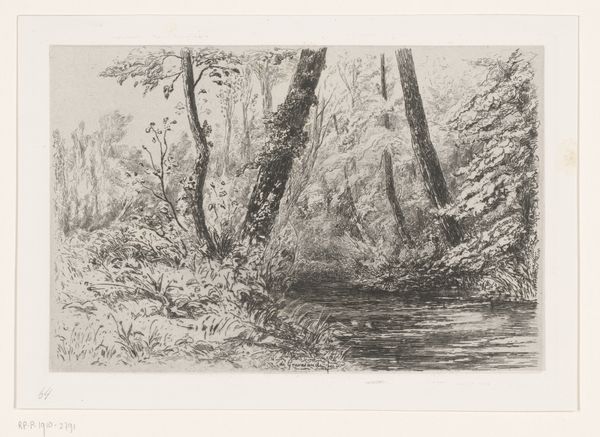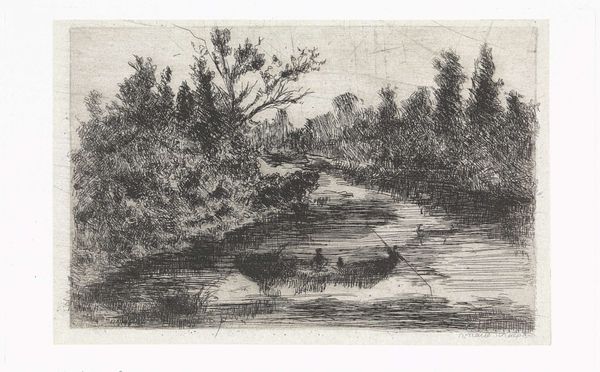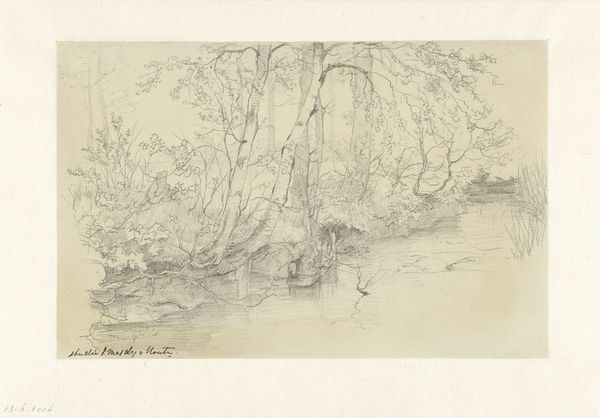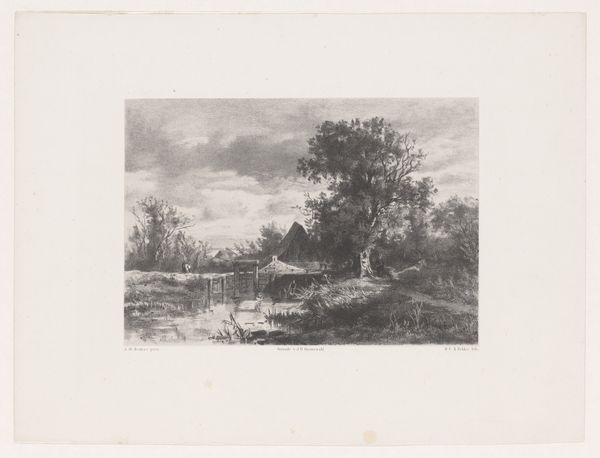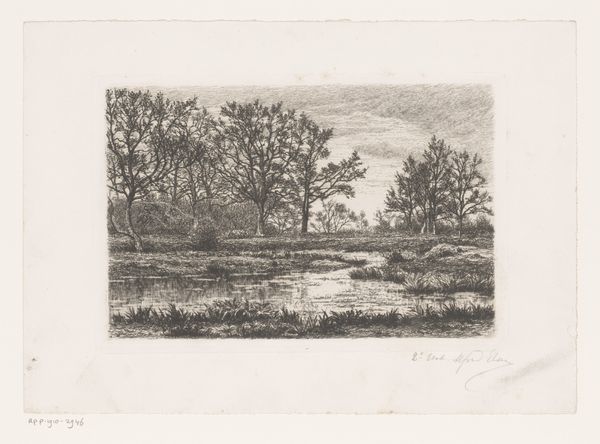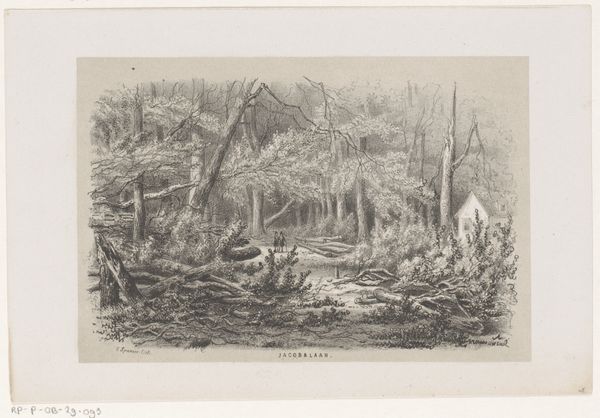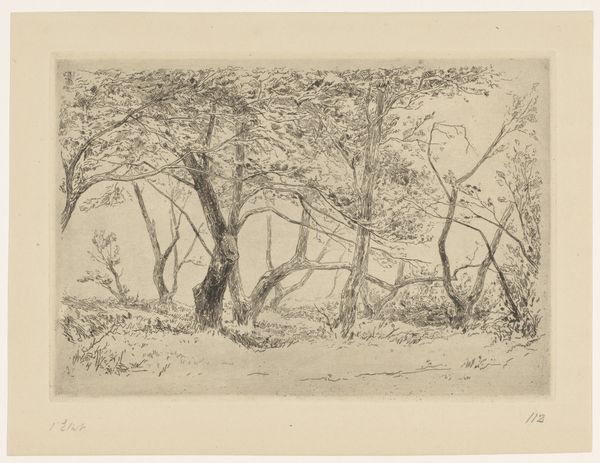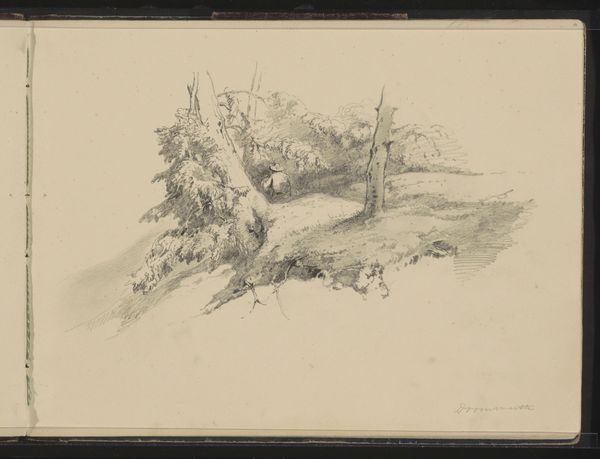
Dimensions: height 165 mm, width 245 mm
Copyright: Rijks Museum: Open Domain
Curator: Hendrik Wilhelmus Last created this pencil drawing, titled "Omgewaaide boom, na de storm van 28 mei 1860," in 1860. The work, now housed in the Rijksmuseum, depicts a landscape featuring an uprooted tree. Editor: It certainly has a melancholic feel to it. The intricate detail, the fallen tree reaching across the water, almost reads as a metaphor for disruption and resilience in the face of natural disaster. Curator: Indeed. Last's meticulous use of line and tone emphasizes the chaotic aftermath of the storm. Notice how the realism employed invites us to carefully examine the details—the textures of the bark, the reflections on the water's surface, all lending a vividness that goes beyond mere documentation. Editor: But isn’t the socio-political aspect fascinating? 1860 was a period of massive change. Landscape art provided the public with images that could reinforce notions of nationhood and the relationship of humans with nature. Consider how the "Romanticism" inherent in landscape became politicized— Last documents nature with some dispassion and precision. Curator: The historical context is relevant, but consider how Last contrasts areas of density with airy open spaces. The use of pencil allows the artist to explore delicate textures alongside strong contrasts in a singular image. The interplay between the detailed foreground and the softened background, where there appear to be figures... fascinating. Editor: These Romantic landscapes often became associated with national identity; the inclusion of figures suggests humanity regaining perspective on nature after the storm. The gallery where this was displayed shaped the response— situating a natural event within a larger cultural narrative. The location affected how art shapes society and our comprehension of history. Curator: Your emphasis on historical forces influencing reception are important points. Looking at Last's approach I appreciate more fully the semiotics of his landscape in formal artistic terms. The disruption of the landscape reads like a form of brutal honesty. Editor: Yes, exactly! We see a society's reflection, and its story of overcoming great odds in Last's beautiful piece.
Comments
No comments
Be the first to comment and join the conversation on the ultimate creative platform.
